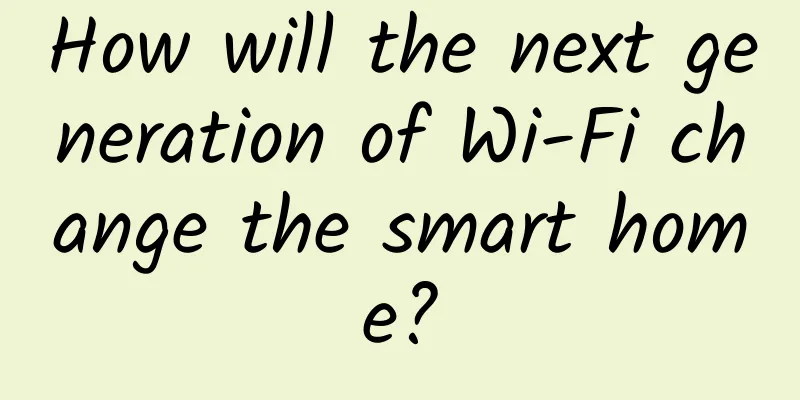After 5G technology, there may not be 6G base stations! Why do you say that?

|
When the 4G technology standards were announced, many people thought it was amazing. With the announcement of the 5G technology standards, some people looked at the technical indicators and felt that there was already a problem of oversupply, and believed that by 2030, when 6G technology appears, it may be even more powerful in terms of bandwidth and time delay. If we look at the development of the past few generations of networks, we will find that mobile communication technology is not limitless. In the 2G era, a base station built in an ordinary town may cover community users within a radius of several kilometers. When the 3G and 4G technical standards came, the number of base stations built did not decrease, but increased. By the time of 5G, the construction of base stations has been divided into indoor and outdoor. Even the millimeter wave technology route of the United States cannot be used in the Chinese market. In the current 5G spectrum, the ideal high-frequency spectrum has very strong transmission capabilities, but the penetration ability is very poor. If you use a high-frequency spectrum mobile network indoors, you may not be able to find the signal and the network may be disconnected. In addition, for mobile telecommunications service providers, the higher frequency spectrum has high transmission power, which increases the cost of purchasing equipment on the one hand, and the increase in electricity expenses also invisibly increases the operating costs. Consumers no longer demand network speed for mobile communication networks. For example, the fiber optic network currently used has an actual flow rate of 1M/S most of the time, while 10M/S or even 20M/S is difficult to use even for watching high-definition TV series. The only situation where high broadband speed can be used is when downloading large files, and in such situations consumers can often endure the torment of long download times. The speed of 5G mobile technology is faster than most optical fibers, and ordinary users cannot perceive whether the time delay is high or low, and the large capacity of the equipment is not what ordinary users care about. For everyone, the pain point is not the speed, time delay, jitter and other issues, but whether the cost can be reduced. Compared with 4G, 5G has become an electricity tiger, and the signal penetration is not too strong, so it is difficult for users to feel the actual effect of the network upgrade. The use of spectrum by 5G technology has reached its physical limit, and any higher spectrum may involve signal loss. At present, some mobile telecom operators are more interested in low-spectrum construction rather than high-spectrum networks when building base stations. The effect of increased network speed is proportional to the cost, which is likely to kill not only telecom operators but also mobile users. Therefore, it is difficult for the 6G technology standard to attract users by relying on network speed. Therefore, when 5G technology is deployed on a large scale, 6G may no longer appear in the future. On the contrary, in order to reduce costs and avoid the increase of base stations and power consumption, telecom operators' demand for equipment will be more towards latency, jitter, and deterministic transmission. Even if the network transmission speed is increased, it will increase the utilization rate of the existing spectrum, improve the penetration ability of the signal, and reduce the cost of maintaining base station operations. Those millimeter waves and even terahertz spectrum will only be used by niche consumers, rather than becoming a technology widely adopted by mobile operators. Although many countries and companies are developing 6G technology, it is generally believed that it will be born in 2030. The editor believes that with the development of 5G technology and the successful application of the iterative concept in the mobile phone business, even if there is a 6G technical standard in the future, it will most likely be swallowed up by the 5G technical concept. In other words, even if there is a 6G technical standard in the future, traditional telecommunications equipment suppliers and operators have the motivation to blur the concept and turn it into a new 5G, rather than tearing down 5G and rebuilding 6G base stations. |
<<: 5G security has become a focus, but do you really need 5G?
>>: Sprinting towards the 5G era: Base station construction speeds up and application areas expand
Recommend
Why does the wireless router need to be restarted? You will know after reading this
Wireless routers have become an indispensable net...
Why Microsoft's acquisition of Nuance is a big deal
[[394293]] Microsoft recently announced that it w...
China Mobile added 16.65 million 5G package users in May, totaling 222 million
[[406533]] China Mobile recently announced its op...
Deep understanding of DNS tunnel communication in practical scenarios
Preface Recently, we conducted an in-depth analys...
Last day! Tencent Cloud: 1C2G5M lightweight server 48 yuan/year, 2C4G8M three years only 198 yuan, COM domain name first year 1 yuan
Tencent Cloud's Double Eleven event has offic...
When it comes to data transmission, 5G is just the beginning
If there’s a technology that’s tailor-made for th...
Huawei releases power distribution solution based on edge computing IoT and AMI 3.0 solution covering all scenarios
During the 2017 Huawei Connect Conference HUAWEI ...
Just now! ZTE Announcement: Affected by the rejection order, the company's main business activities can no longer be carried out!
On the evening of May 9, ZTE issued an announceme...
H3C: The key to computing-network integration lies in the efficient coordination of computing power and transportation capacity
On September 26, the "2022 China Cloud Netwo...
Saving 5G, starting with removing the pull-down 5G switch?
Recently, many users have found that the 5G signa...
2018 Top Ten Internet Trends Prediction: 5G Becomes the Focus
Whether it is the turbulent forty years in Wu Xia...
The network infrastructure of the future is intelligent
Smart systems have become an increasingly common ...
The third quarter data is out. Are the three major operators standing still or accelerating?
[[431529]] Recently, the three major operators ha...
Emoji.voto, a sample application for Linkerd service mesh
[[412321]] A microservice application that allows...
5G package users exceed 200 million, 5G mobile phones are accelerating into the popularization period
Recently, China Mobile, China Telecom and China U...









